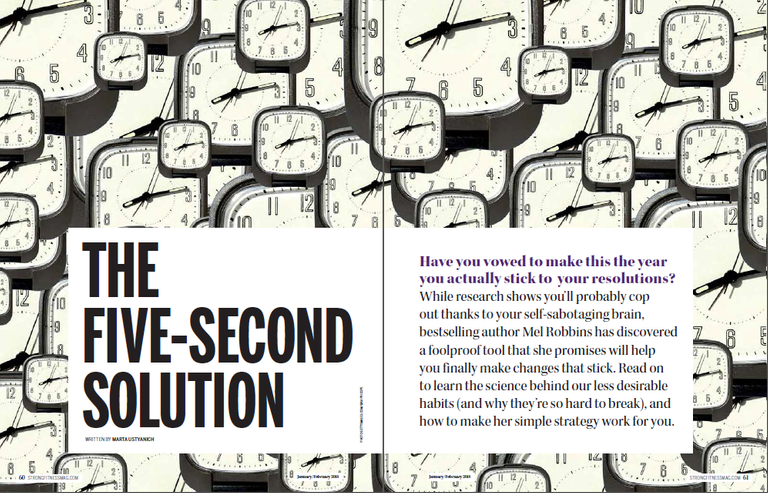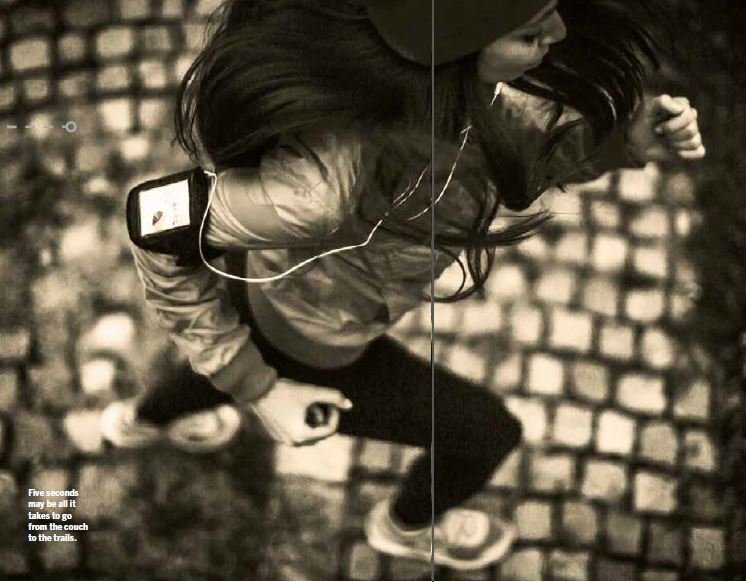
Autopilot: The Sneaky Saboteur
Maybe you've set a conscious intention to get to bed earlier, but suddenly it's one a.m. and you're still scrolling through Instagram. Or maybe you've resolved to start drinking more water, only to realize three days later that most of your liquids still come in the form of coffee and wine.
Change is hard, and the reason we often set sky-high goals only to fall flat on our faces is because, typically, our intentions aren't exactly aligned with our habits. A study published in the Journal of Consumer Psychology suggests that the stronger our habits, the less likely our intentions are to predict our behavior. As much as 45 percent of what we do every day we do out of habit, without a second thought. Even our mental processes are largely unconscious to us. But just like your resolution to start meditating every day, our habits have good intentions. They protect us from what psychologists call "decision fatigue"—the drain on our mental energy that comes from making decisions. "Whatever can be done automatically frees up our processing power for other thoughts," explains psychologist Jeremy Dean in his book Making Habits, Breaking Habits (2013). And while autopilot is an excellent evolutionary adaptation that can help us safely and efficiently go about our days, it also means that we rarely notice our habits, let alone pause to think whether they're getting us closer to our goals or holding us back.
Wired for Reward
But how do we outsmart evolution and start moving with purpose? "The first step is understanding that unhealthy behaviors will always feel good," says Robbins. That's because these unhealthy and unproductive habits—whether it's an insatiable sweet tooth or a craving for wine when you're anxious—are tapped into our brain's reward system, spiking the feel-good neurotransmit-ter dopamine every time we give in. "We're animals, and we're often on autopilot, so we allow our brain's reward system to unconsciously dictate our actions." "Even when we know what we should do, we do the opposite because of the easy dopamine hit," explains Robbins. What's more, the harder a habit is to establish, the more likely you'll be to give up if you're not strongly committed. That's because your mind is quick to come up with reasons why your effort isn't worth it so that you'll default to your usual patterns of behavior. And just when you thought you were out of the woods, "Research on both animals and humans suggests that even after habits have apparently faded away through lack of repetition, they still lie in wait to be reactivated," writes Dean. Meaning that familiar situations and triggers will threaten your resolve.
Old Habits Die Hard
Another reason habits are so hard to break comes down to good old muscle memory, says Gregory Ashby, PhD, a distinguished professor in the Department of Psychological and Brain Sciences at the University of California, Santa Barbara. For example, if you always turn to food in times of stress, this becomes your automatic response when you feel your cottisol start to spike. Or if you're prone to doubt or hesitation, this response to things that intimidate you becomes second nature. When you repeatedly respond in the same way to specific cues in your environment, you strengthen neural pathways in a primitive part of the brain known as the basal ganglia, which is responsible for habit learning. Your brain becomes so efficient at carrying out these actions or thought processes that they become automatic and reflexive. "What happens when you practice a behavior enough times is, eventually, it doesn't need the feedback anymore," says Ashby. You perform them whenever certain cues are present, regardless of whether they're actually getting you anywhere. If you want to shift from unconscious habits that are getting you nowhere to conscious decisions that get you closer to your goals, the key, according to Dean, "is to find a way to sabotage our unconscious, automatic processes and bring the decision up into the conscious mind." In science lingo, that translates to activating a part of the brain that's responsible for conscious processes like goal setting and decision making known as the prefrontal cortex. So, how exactly do you do that?
The 5-Second Brain Hack
According to Robbins, "At any moment you are capable of making a decision that changes the rest of your life." Habit researchers have identified some effective strategies to help you become aware of these opportune moments to make a different decision. For example, to clue into our strongly established habits, researchers found that being vigilant was the best strategy. Another study that examined snacking habits showed that knowing your triggers, or "cues," can help alert you to a different course of action. Robbins also points out that once you've set a goal or intention, research shows that "Whenever you are near things that can help you achieve those goals, your brain fires up your instincts to signal to get that goal completed."
The key then, according to Robbins, is to act on those instincts—and that's where The 5 Second Rule comes in: "When you have an instinct to do something that will help you reach one of your goals, you must immediately count 5-4-3-2-1, and then physically move in the direction of that thing," she says. Why count down from five? Five seconds is all it takes for your brain to trigger that familiar cascade of self-doubt, hesitation, and excuses that are designed to keep you right where you are. "That is how the system in your brain works—the longer that you think about something, the lower your urge to act becomes," explains Robbins. "As soon as that impulse to act kicks in, you start rationalizing it away."
More importantly, the very action of counting down fires up your prefrontal cortex, snapping you out of autopilot and into decision-making mode, and empowering you to take immediate action when the dock runs out. Have the urge to work out? Count 5-4-3-2-1, then lace up and go. Questioning if you really need that third glass of vino? 5-4-3-2-1, then pour a sparkling water instead. "By teaching yourself to take action when normally you'd stop yourself by thinking, you can create remarkable change," writes Robbins. It's a simple concept that's helped Robbins herself and millions of others make profound changes in their lives. Of course, it still requires you to put in the work. "The Rule doesn't make these things easy, it makes them happen," she points out—but when it comes to gettin"er done, that's all that matters.
Armed for Action
Equipped with this simple, ready-to-use tool, you should be armed for your brain's efforts to derail you as you recommit to your goals and resolutions. And since The 5 Second Rule is all about taking action, the more you put it into practice, the more you reinforce that impulse to act. "You actually can develop new neural pathways which lead to lasting behavior change," Robbins explains on her blog. As Dean explains in his book, "Habit change isn't a sprint, k's a marathon. The right mindset is to wake up tomorrow almost exactly the same person, except for one small change—a small change that you can replicate every day until you don't notice it anymore." Like the daily grind that nets you big results in the gym, start putting in small actions every day with The 5 Second Rule, and watch them add up to big changes over time.

